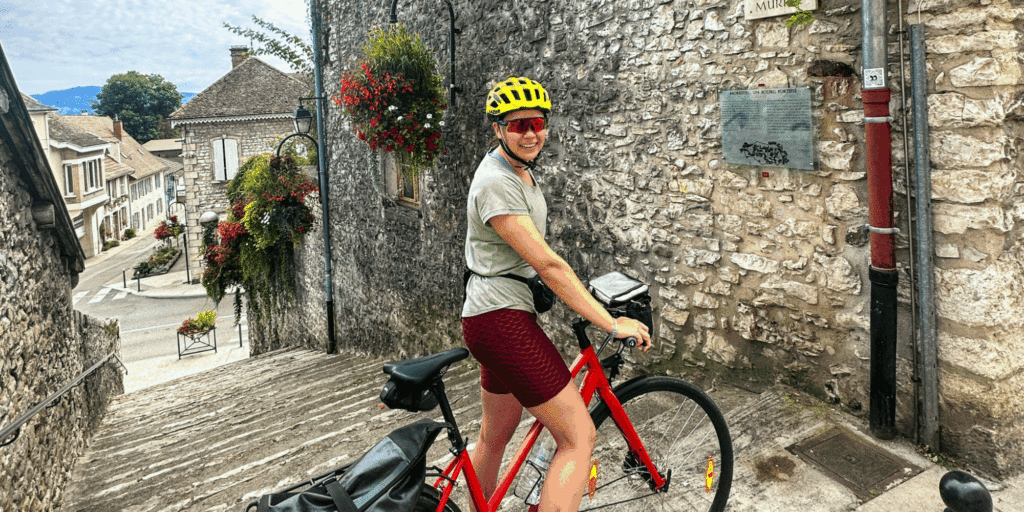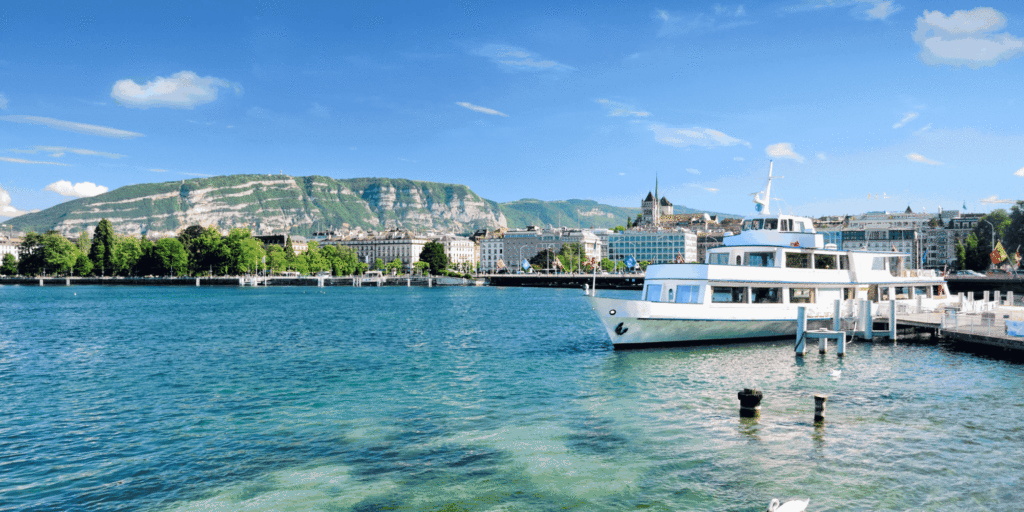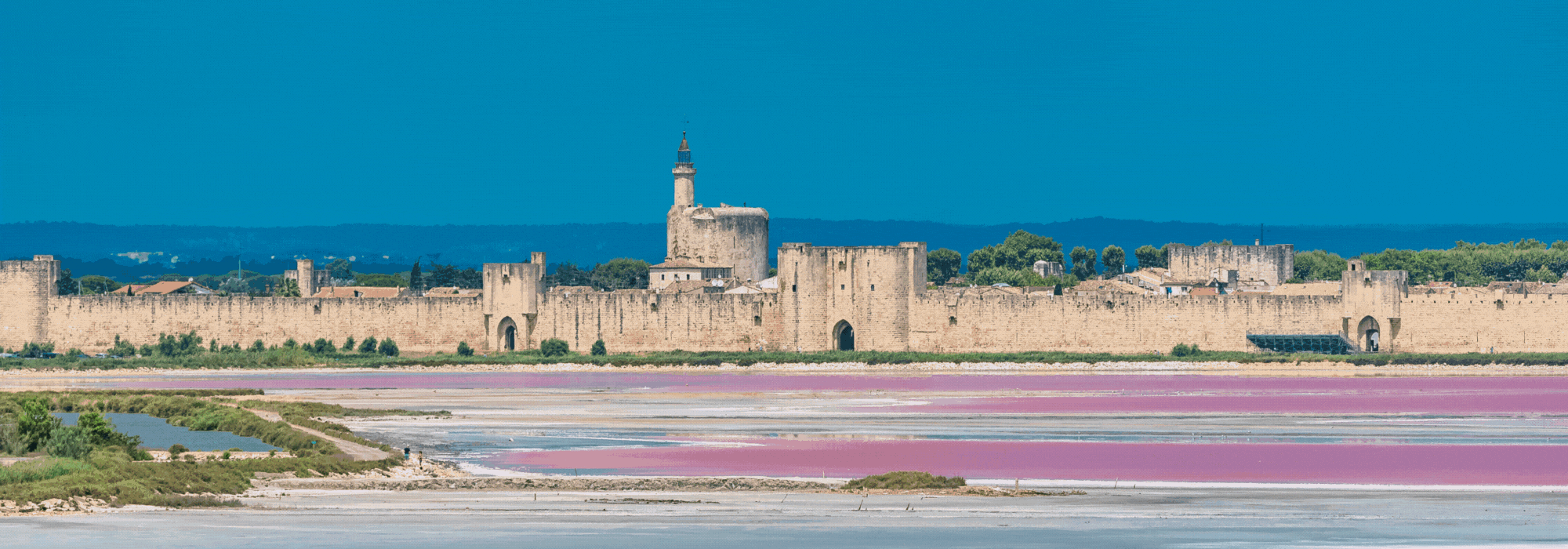Tired of the same old, fast-paced vacation? Dreaming of an adventure where the journey is the destination, and your carbon footprint is as light as the breeze on your face? You’re in luck. Europe is home to one of the most remarkable and accessible long-distance cycling paths in the world: the Rhine Cycle Route, or EuroVelo 15. This isn’t just a bike ride; it’s a slow-motion grand tour through the heart of the continent, offering stunning landscapes and a real connection to the places you pass through.
The Rhine Cycle Route is a magnificent 766-mile (1,233 km) journey that follows the legendary Rhine River from its source at Lake Constance in Switzerland to its final destination at the North Sea in the Netherlands. Along the way, it gracefully glides through six different countries—Switzerland, Liechtenstein, Austria, Germany, France, and the Netherlands. The best part? This route is overwhelmingly flat and well-maintained, making it an ideal choice for beginners, families, and anyone who prefers a leisurely pedal over an uphill battle.
A River of History and Breathtaking Scenery
As you follow the river’s path, you’ll be pedaling through centuries of history and a truly breathtaking variety of landscapes. Your journey begins in the high, clean air of the Swiss Alps, where the route climbs to an elevation of almost 7,000 feet before descending into the tranquil Vorderrhein valley. From there, the trail takes you to iconic sights like the powerful Rhine Falls, Europe’s largest waterfall.
The trail then takes you through a patchwork of cultures. You’ll briefly pass through the tiny principality of Liechtenstein, with a chance to admire the royal Vaduz Castle. In Austria, you can take a well-deserved break in the charming medieval town of Feldkirch before crossing into Germany, which hosts the longest stretch of the route. Here, you can cycle through enchanting towns like Speyer and Worms, past ancient castles, and even take a detour for a glass of wine in the Markgräfler wine region—because what’s an eco-friendly adventure without a local toast?
The journey into the Middle Rhine Valley is a highlight for many cyclists. This UNESCO World Heritage Site, between Mainz and Koblenz, is a dramatic river gorge carved through the mountains, lined with more than 40 castles and fortresses. It is a stunning visual feast that truly feels like cycling through a fairytale.
After Germany, you’ll be treated to the picturesque fairytale towns of France. Take a moment to park your bike and wander through the stunning UNESCO World Heritage Site of Neuf-Brisach or explore the historic city of Strasbourg, a vibrant European capital with its own rich history and beautiful architecture. The final leg of your trip takes you through the famously flat landscape of the Netherlands, where the river separates into different branches before emptying into the North Sea.

Planning Your Journey
Embarking on the Rhine Cycle Route is an exercise in preparation and spontaneity. The route is best tackled between May and September, when the weather is mild and the days are long. The path is predominantly paved and well-signed, though you should always be prepared for short sections of unpaved trails, especially in the more rural areas.
Most cyclists choose to ride touring or hybrid bikes, which are comfortable and can handle various surfaces. If you don’t want to bring your own, many companies offer bike rentals and even luggage transfer services to make the journey even more seamless. The full route can be completed in two to three weeks, but it can also be broken down into smaller, more manageable stages.
For a first-hand look at what the journey is like, take a look at this documentary from a cyclist who completed the route:
The Call of the Open Road and a Lighter Footprint
Beyond the scenic beauty, the Rhine Cycle Route offers a powerful lesson in sustainable travel. By choosing to explore on two wheels, you are actively reducing your carbon footprint, bypassing the congestion of highways, and immersing yourself in a landscape that’s meant to be savored, not sped through. This kind of low-impact tourism supports the local communities you pass through, encouraging you to stay in small guesthouses, dine at local restaurants, and buy products directly from the people who made them.
This journey is a reminder that travel doesn’t have to be a race. It can be a deliberate, mindful choice to connect with the world around you. You’ll have the opportunity for peaceful birdwatching in the riparian woodlands, spontaneous chats with fellow cyclists, and the simple satisfaction of earning every breathtaking view. It’s a chance to feel every mile, every country, and every culture, all while leaving a minimal trace.
A Future Powered by Pedals
The Rhine Cycle Route is more than just a bike path; it’s a model for the future of tourism. It proves that we can create incredible, unforgettable travel experiences that are in harmony with the environment and the local communities. The challenge now is for more people to embrace this kind of slow, intentional travel. So, pack your panniers, check your tire pressure, and get ready for an adventure that will not only change your perspective on Europe but on the very way we explore our world.

Related Content
- EuroVelo 15 Official Website: A great starting point for official maps, information, and updates.
- The Rhine Cycle Route: Ultimate Planning Guide: A detailed guide with stage-by-stage breakdowns and practical tips.
- EuroVelo 15 Camping: Sites and Tips: A useful resource for finding campsites and accommodation along the route.
- Rhine Bike Rentals: A sample bike rental company to give you an idea of services available.
- Understanding the Climate Crisis
- The climate crisis is a pressing global issue fueled by human activity, resulting in severe environmental and health impacts. Urgent action is needed across multiple sectors, including energy, agriculture, and forestry, to mitigate these challenges.
- The Gulf Stream Could Be in Trouble: Examining the AMOC’s Collapse and Pragmatic Solutions
- The Atlantic Meridional Overturning Circulation (AMOC) powers the Gulf Stream, regulating global weather and ocean systems. However, climate change, driven by greenhouse gas emissions and Arctic ice melt, is weakening the AMOC. If this critical system collapses by mid-century, it could lead to extreme weather, rising sea levels, and marine ecosystem collapse.
- Living Green: Embracing Eco-friendly Practices in Our Daily Lives
- Discover practical tips for living green and embracing eco-friendly practices in your daily life. Learn about sustainable food choices, energy-efficient home practices, and more to reduce your environmental impact.
- Sustainable Living: How You Can Help Preserve Our Planet
- Discover practical steps to adopt sustainable living and preserve our planet. Learn about eco-friendly practices, sustainable food choices, and individual actions.
- Preserving Our Planet: A Comprehensive Guide to Environmental Conservation
- Preserving our planet is not just an option but a moral imperative in the face of escalating environmental challenges.
- Turning the Tide: How You Can Fight Climate Change from Home
- Discover practical and impactful ways to fight climate change from the comfort of your home. Learn how to reduce your carbon footprint with energy-efficient solutions, sustainable transportation, plant-based diets, and more. Every small step counts!
